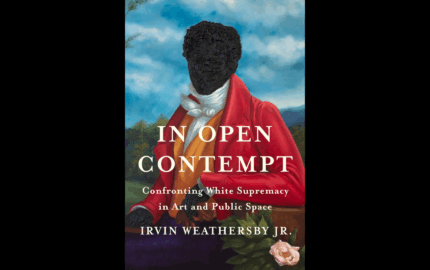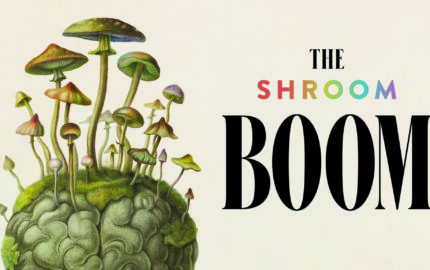The fall equinox takes the Earth's Northern Hemisphere into official autumn tonight. There's already been a dusting of snow in the high Cascades that rise just west of my cabin; the furnace, turned low during summer, kicks on overnight. Yet the sport of baseball has five weeks to go before winding its slow way to the World Series, which could extend into early November. I grew up with a love of baseball — my father played, as did my four brothers and I — but I always attached it to a love of summer: slow, hot days that drifted into long, gentle evenings, parents settled in lawn chairs with beer and Band-aids, kids swinging wooden bats as long as they were tall and chasing the pop flies that eluded their oversized gloves.
Now I've come to equate baseball with the desire to cling to that summer feeling. Time speeds up as the years tick by, but baseball defies any practical clock. The World Series seems to come later each year — we'll be halfway through the pro football season — but that's OK. It offers a distraction from the relentless shortening of days — what is called, up on the northern latitude of Seattle, the Big Dark.
But this little elegy, and the lonely baseball in the photo above, is not about the long season of a single sport. Rather, it's how I've been thinking of the abrupt sunsetting of another American institution: >The New York Times sports section.
Even more, it's about a far more eloquent ode — a column by Washington Post sports columnist Barry Svrluga.
Don't care about sports and sports journalism in general or The New York Times brand of sports journalism in particular? No need. I urge you to read Svrluga's column instead as an example of writing that both transcends its defined world while it taps into some of the best wells of literary grace.
Yes, sports journalism is one of them. In my newspaper days, the sports department was usually in a far other corner of the newsroom; some of metro reporters, who did "serious journalism," derided it as the Toy Department. That is an outdated criticism: Sports is big money, big culture, big politics and often big controversy, and sports reporters — at least those at independent news sites — have to dive into all of that. It's also an unfortunate prejudice: Sports journalists often have been among the most creative writers at newspapers and magazines. Maybe that's because they didn't have to chase grisly crime news or stare down the lies of politicians. Whatever the reasons, there was much to learn from reading their work.
Learning From Sports Stories
When I was a newbie news reporter, long before the notion of "narrative" journalism was part of my job or my aspirations, I had a few high-end publications that I read because 1) I was trying to learn how stories worked and 2) I found them engaging. Top of the list: Page One stories in the Wall Street Journal, the Sunday magazine in The Washington Post, Esquire and Sports Illustrated. I reached for SI not to follow sports per se, but because I found myself pulled into stories that were wrapped in sports but, once opened, were about much more: emotion, relationships, struggle, striving — all those things that are part of elemental humanity.
Later in my reporting career, I was sent to cover the Olympics. (The three sports reporters lined up for the assignment all had last-minute life interruptions and, as the weary sports editor pointed out, I had a passport.) I did OK, not because I knew anything about team handball or Greco-Roman wrestling, but because 1) I looked for the character and drama in events and 2) I sat with some of the best sports reporters in the world, including those from The New York Times. Back in the newsroom, I was assigned to an extended stint in sports to do exactly the non-game kind of stories I had done in desperation at that first Olympics, and that got me sent to a second.
What I learned stayed with me as I waded further and further into narrative story work:
Sports reporters write as they go. A game or event plays out before them, and they write passages as they happen. Along the way, they are looking for the telling moments, the key scenes. They are looking for meaning and theme. And they are doing it very, very fast. They don't dither around waiting for the muse. They pay acute attention in the moment and deliver the best story they can on deadline.
Sports reporters save string for the big take. While they are doing the deadline drill above, they are banking ideas for the profile, column or take-out they want to spool out more slowly. They see the game as a doorway that opens to all manner of stories beyond.
Sports reporters look for the stories the rest of the pack didn't see. Sports and political journalism may be the ultimate versions of pack journalism, which too often leads to derivative journalism. But the best sports reporters look for openings that offer glimpses to fresh angles, and to stories that they are most passionate about. They dared to bring their personality to their profession.
Sports itself follows a narrative arc. Each game or match or meet has a beginning, middle and end. There is natural tension. There are characters to follow through action and scenes.
Sports sometimes offers surprises and sports reporters must be alert to them. They are those little gems that make a predictable story anything but.
Sports are about skill, yes, but at heart is about just that: Heart. Emotion. Loss and triumph and dealing with both.
That's a lot to learn from. That's also the kind of learning I've found, over the years, from New York Times sports reporters.
Others are doing that kind of work, of course. The Wall Street Journal's sports coverage is a stand-out. As are some pieces in Esquire, in regional newspapers, in USA Today and in what's left of Sports Illustrated. And yes, in The Washington Post, home to columnist Sally Jenkins.
An Homage That Honors Multiple Forms
But again, I urge you to read Barry Svrluga's ode to capture all of this far better than I dare to try. He writes as the best of sport writers do — with good reporting, literary grace and unapologetic emotion. Further, he uses his homage to a competing sports staff as a reflection of changes in journalism and society in general.
And he draws on the best of another primary style of journalism we all should study and learn from: the obituary. In doing that, he acknowledges the survivors — in this case, The Athletic, which I read and admire. But his focus in this piece is on what made The New York Times sports coverage special:
The Times sports section was never close to a traditional one, nor was it particularly a sports section for sports fans, certainly not red-blooded American sports fans who are caught up in who won and who lost, who was the hero and who was the goat.
Its stars were its writers, a history and present too broad, deep and talented to list here. ... Its topics were eccentric more often that not, its audience global. Hardcore New York Knicks fans didn’t turn to the Times for the latest on injuries or lineup changes. No one would say otherwise.
But anyone who read it knew what it was, which was a place for deep reporting and superior writing, for stories you found few other places.
I'm going to print out the key points in that last paragraph and tuck it in my teaching folder. It is as good a definition of narrative story work as any I've read.



